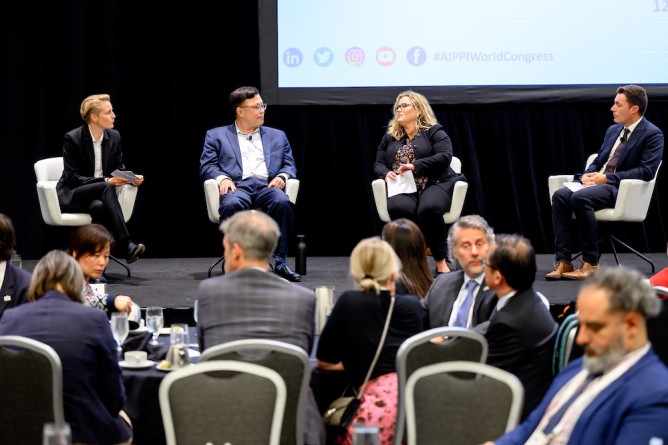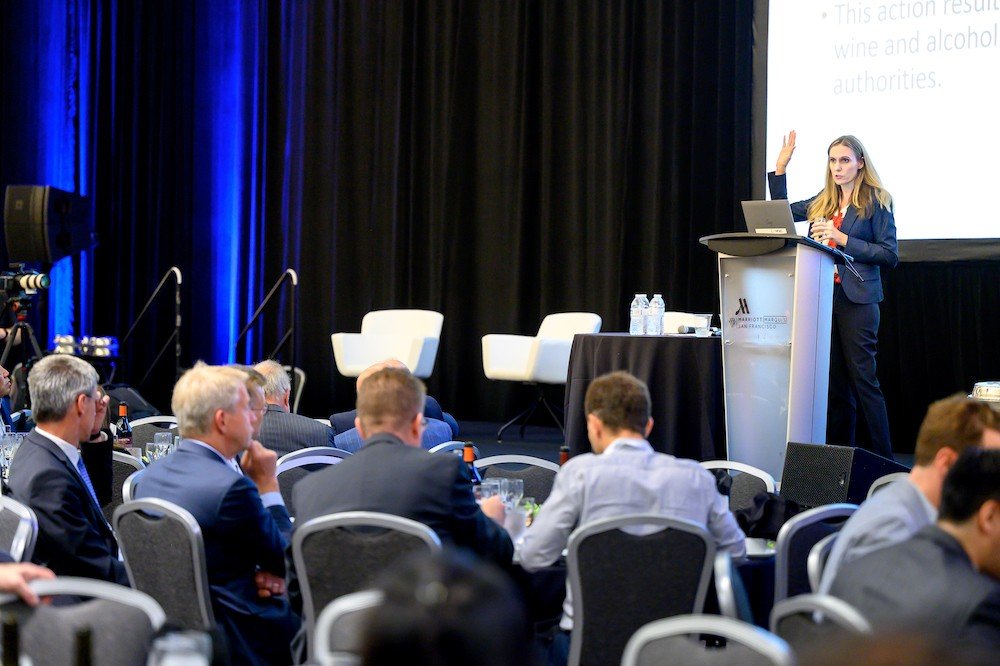AIPPI luncheons address diversity and inclusion, graffiti and the finer points of wine
13 September 2022

Luncheon sessions at the AIPPI 2022 World Congress in San Francisco have provided attendees the opportunity to hear experts speak on diversity and inclusion, wine and, at the today’s session, graffiti and street art.
Law firms today are taking diversity and inclusion (D&I) more seriously than ever, but for it to work as intended, lawyers must also feel included as part of the team, attendees of a luncheon focusing on D&I heard on Sunday.
“We should think about inclusion, but the flip side to inclusion is belonging,” said Jason Murata, a partner at Axinn, Veltrop & Harkrider in San Francisco. “We can do all that we want to include people, but if they don’t feel like they belong at the firm, they will leave the firm. I can invite women to come join us, tell them they’re fantastic and give them projects, but if we don’t have a good parental leave policy, or we still have guys-only activities going on… if you don’t feel like you belong on our team, why would you stay when you can go somewhere else and have a sense of belonging?”
“The business case for diversity and inclusion comes from diversity of thought,” said Carlyn Burton, a partner at Osha, Bergman, Watanabe & Burton in Houston. “People of different backgrounds come with different perspectives, and that’s why we see more success when we have diverse teams. But that diverse team isn’t going to stay unless there is inclusion.”
Judith Willert, Executive Director of AIPPI, opened the luncheon session by discussing the business case for D&I at law firms, citing a March 2022 World Economic Forum study that showed improved performance by teams that had elements of diversity ranging from gender to ethnicity to national origin.
Panellists noted that while some in house counsel teams still prefer to work with the law firms with whom they’ve had long-term relationships, more companies are asking law firms how the firms have implemented D&I. “Almost every RFP these days wants to know about a firm’s D&I,” said Burton. “Some industries are more interested than others.”
Publishers of legal directories are also increasingly asking about D&I on the surveys they send to law firms each year.
Despite the continuing emerging business case for D&I, such activities are still relatively new to most law firms. Panellists cited a number of reasons that the legal community has been slow to adopt D&I, including its tendency to turn to precedent when trying to solve a problem, risk aversion and the fear that D&I may not work within a law firm.
“Our profession, like many other professions, is being disrupted,” said Michael Hawkins, a partner at Noerr in Alicante, Spain. “Technology is coming and taking away some of the traditional roles we’ve had. We need a lot of perspectives. We need different perspectives on how to address that.”

Alexis Garcha, associate general counsel at E. & J. Gallo Winery, speaks at the AIPPI wine tasting lunch
On Monday, AIPPI hosted its first wine tasting luncheon, which featured not only wine, but also a lively discussion about the role of intellectual property in the wine world. So, while Mark Boccardi of Marietta Cellars in Sonoma County, led the legal audience in the five S’s of wine tasting of see, swirl, sniff, sip, and swallow, lawyers from E & J Gallo Winery, France, and the US, informed on the legal side of wine.
“What is wine?” asked Dariusz Szleper, a partner with Szleper Henry in Paris. It’s primarily water – 85% water, Szleper said – and alcohol. But what do you do when the wine in the bottle is not the same as the wine on the label?
Italy, Spain, and France, the top three producers of wine, make more than 11 billion bottles a year, Szleper said. According to a report by Allied Market Research, the global luxury wine and spirit industry was valued at US$970 billion in 2019, and is expected to reach US$1.4 trillion by 2027.
Counterfeiting affects alcoholic beverages across multiple price points, and is mostly seen in Asia and Europe, said Alexis Garcha, associate general counsel at E. & J. Gallo Winery in Modesto, California. In one recent operation, OLAF, the European Anti-fraud Office, targeted 22 countries and seized nearly 1.8 million litres of wine and alcoholic beverages.
“But does it matter?” she asked.
It does, she argued. Counterfeiting costs €2.7 billion (US$2.7 billion) in direct sales, which results in an almost 7 percent reduction in sales for wineries, and results in over 7,000 job losses. It also leads to approximately €2.2 billion (US$2.2 billion) in lost tax revenue for governments, as counterfeiters typically don’t pay tax, Garcha said.
Wineries typically find out about fake wines bearing their labels when a shipment gets stuck in customs, is tested and shown to be counterfeit. But when the product held up by the authorities is wine, Garcha says it is more challenging to work out whether or not it belongs to a particular winery. This usually means analytical testing, from identifying the specific preservatives used, the sugar levels and/or the acidity level.
“It is very expensive, and becomes very time consuming to fight the counterfeiters,” Garcha said. Packaging is also crucial, and an incorrect lot number can sometimes show that the wine was not even manufactured on the day claimed on the carton.
“But when you prove it’s not yours, then what?” Garcha asked. Often, the winery ends up paying for the counterfeit bottles to be destroyed, she explained, because wineries don’t want the fakes to appear on an auction block somewhere.
Wineries have been changing up their labelling, caps and seals, said Maria Scungio, a partner with Robinson Cole in New York, displaying a variety of unusual labels and label placements, as well as innovative caps and seals, registered for trade dress protection in the U.S. Patent and Trademark Office. In the past few years, multiple wineries have been turning to the courts for assistance in protecting their trade dress and trademarks.
Today’s session on graffiti and street art will feature and Suzy Wilson, general counsel and associate register of copyrights at the United States Copyright Office in Washington, Stef van Gompel, a professor at Vrije University in Amsterdam; Sanna Wolk, a special advisor at Schjødt Law Firm and a professor in Stockholm; and Gina Elliott, an attorney at Bradley Bernstein Sands in Los Angeles.
– Gregory Glass and Darren Barton, reporting from San Francisco






